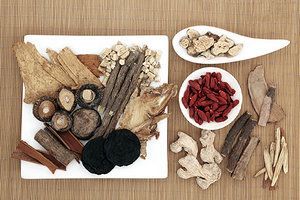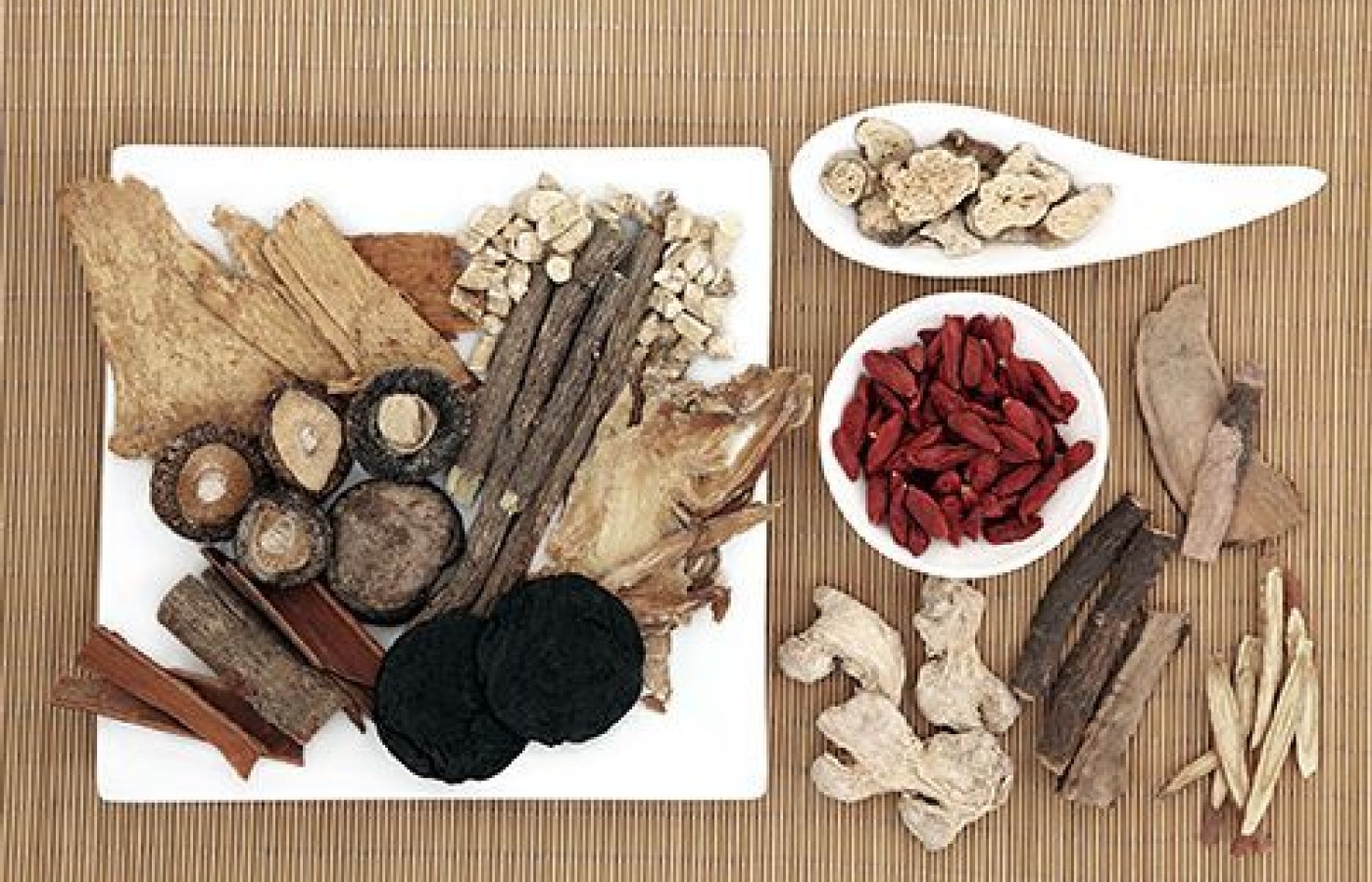Whether you accept it, avoid it or live somewhere in between, insurance coverage has become a defining issue for our profession. Patients increasingly expect to use their benefits, practitioners want to be compensated fairly for their time and expertise, and the system itself remains – at best – fragmented. The encouraging news is that coverage has expanded in meaningful ways. The challenging news is that reimbursement, across the board, remains inadequate.
From Antiquity to Modernity: Huang Qin Tang at Yale Medical School, Part 2
Here, I want to summarize the experiments and studies that validate the wisdom embedded in Chinese medicine theories.
Single-Target vs. Multifactorial Approach: Modern drugs are developed at the molecular level and are designed so that the operative molecules which make up a drug only target or interact with a single, specific biological receptor. Traditional Chinese medicine herbal formulas are made up from whole plant material and therefore, contain from hundreds to thousands of individual chemical compounds within a dosage. Since a TCM formula contains multiple constituent chemicals and generates multiple functional responses in the body, it can be said that TCM medicinal formulas embody a multifactorial approach. As a pharmaceutical form of Huang Qin Tang, PHY906 retains the multifactorial mechanisms and biological actions which are integral to Huang Qin Tang. In its research on PHY906, the Yale Project confirmed that observed outcomes of PHY906 use are mediated by one or more of the constituent chemicals of PHY906.
In vivo studies with the CPT-11/PHY906 combination showed that components of PHY906 could reduce severe late-onset diarrhea symptoms typically caused by CPT-11, thereby allowing CPT-11 to be administered longer in its therapeutic dosage amounts. Studies by Ye, et al.1, in 2007 and Zhang, et al.2, in 2010, confirmed that three different chemical constituents of PHY906 or metabolites of PHY906, mediated the anti-inflammatory activity of PHY906. The action of PHY906 to restore damaged intestinal epithelium through promotion of intestinal progenitor or stem cell growth was traced to several components which affected the signaling mechanism and action of specific protein molecule receptors (Wnt) in the intestinal epithelium in Lam, et al.3 Two major components of PHY906/Huang Qin Tang, Scutellaria baicalensis (Huang Qin) and Paeonia lactiflora (Bai Shao), were found to affect the inflammatory state of tumor tissues in a study designed to investigate the mechanism through which PHY906 enhances the anti-tumor activity of Sorafenib in Lam, et al,4 in 2015.

Duel Effect: The Yale Project proved that PHY906 has a dual effect on CPT-11. PHY906 potentiates the antitumor activity of CPT-11 while also reducing CPT-11-induced toxicities such as weight loss and mortality.7 The duel-action effect of PHY906 has also been documented when PHY906 is used in combination with chemotherapeutic agents 5-FU, VP-16, CPT-11, L-OddC, and L-FMAU. In tumor models of hepatocellular carcinoma and pancreatic cancer, PHY906 has been shown to enhance the chemotherapeutic efficacy of these anticancer drugs, or reduce their toxicity levels, or both.5,6
Multiple Agents: When oncologists treat cancer patients, the use of multiple agents and multiple treatment modalities in combination is a common practice. This approach is clearly resonant with the theory and practice of traditional Chinese herbal medicine, and is a good example of the ways in which classical Chinese medicine principles are consistent with modern medical practice.
In oncology, multiple agents are used to treat the cancer itself, the multiple side-effects associated with cancer, and the side-effects of the chemotherapeutic agents used to treat cancer. For example, in chemotherapies for advanced colorectal carcinoma, it is a common practice to combine LV, 5-FU, and CPT-11 (known as the FOLFIRI regimen), and LV, 5-FU, and oxaliplatin (the FOLFOX regimen). Although these protocols are effective in treating tumors, patients suffer from severe side effects such as diarrhea, nausea and vomiting, and are then given drugs such as high-dose loperamide, which is prescribed for CPT-11-induced diarrhea. Other common chemotherapeutic combinations are 5-FU/LV, CPT-11/5-FU/LV, oxaliplatin/5-FU/LV, and gemcitabine/oxaliplatin. The Yale Project has shown PHY906 to increase the therapeutic indices of these combinations, and has also demonstrated that PHY906 reduces the chemotherapy-induced mortality of the oxaliplatin/5-FU/LV combination in mice models.4
The Yale Project team developed a novel approach to identify the individual chemical components and metabolites of PHY906. Using this creative approach, they identified 57 active compounds in PHY906 including flavonoids, triterpene saponins, and monoterpene glycosidesin; and they further identified 27 new metabolites found in blood plasma following the oral administration of PHY9062.
As noted above, the fact that PHY906 has multiple constituent chemicals which are capable of generating numerous functional responses in the body means that the mechanisms of PHY906 action are multifactorial. The Yale Project repeatedly demonstrated that PHY906 is a broad-spectrum adjuvant that it can enhance the anti-cancer activity of chemotherapeutic agents while reducing their toxicities.5,6
Principles of Chinese Herbal Prescriptions: Classical Chinese herbal formulas, especially Zhang Zhongjing's prescriptions, were constructed systematically, using unique principles. It can be said that the herbs in a classical formula comprise a "family" or administrative group, wherein each individual herb is assigned a specific role and all the individuals work as a team to achieve the desired outcome. One or more of the herbs in a formula is designated to perform one of the following functions: chief herb; deputy herb; assistant herb; envoy herb. The chief herb has the greatest effect upon the principal pattern or disease being treated. The deputy herb assists the chief in treating the principal pattern or disease, or serves as the main ingredient to treat a coexisting pattern or disease. Assistant herbs can assume several tasks, including reinforcing the effect of the chief or deputy; moderating or eliminating the toxicity of the chief or deputy; or demonstrating an effect which is opposite to that of the chief ingredient, but which has a positive effect on the pattern or disease. The envoy herb harmonizes the different ingredients in a formula; or directs different herbs to certain channels or areas of the body.7
In Huang Qin Tang, Huang Qin serves as the chief herb; Bai Shao serves as the deputy herb; Da Zao serves as the assistant herb, and Gan Cao serves as the envoy herb.7 The Yale Project confirmed that all four herbs comprising the PHY906 formulation are necessary to produce its demonstrated biological effects. To arrive at this conclusion, Yale Project researchers conducted experiments to test the effectiveness of the PHY906 formula when one of its constituent herbs was removed. Four modified versions of PHY906 were created by removing one of the four herbs, and each version was compared to the other modified versions, as well as to the complete PHY906 formula, in the following areas: (a) potentiation of antitumor activity, (b) reduction of body weight loss, and (c) prevention of mortality. The results showed that Huang Qin Tang/PHY906, in its complete form, had the most significant outcomes in all three categories. PHY906 without Huang Qin had no effect on potentiation of antitumor activity and reduction of body weight loss, and only a "possible" effect on prevention of mortality. PHY906 without Bai Shao had no effect on potentiation of antitumor activity, but did have a significant effect in reducing weight loss and preventing mortality. PHY906 without Gan Cao had a "possible" effect on potentiating antitumor activity, no effect in reducing weight loss, and a significant effect in preventing mortality. PHY906 without Da Zao had a significant effect on potentiation of antitumor activity, but no effect on reduction of weight loss or prevention of mortality.8
References
- Ye M, Liu SH, Jiang Z, Lee Y, Tilton R, Cheng YC. Liquid chromatography/mass spectrometry analysis of PHY906, a Chinese medicine formulation for cancer therapy. Rapid Commun Mass Spectrom. 2007;21(22):3593-607.
- Zhang W, Saif MW, Dutschman GE, Li X, Lam W, Bussom S, Jiang Z, Ye M, Chu E, Cheng YC. Identification of chemicals and their metabolites from PHY906, a Chinese medicine formulation, in the plasma of a patient treated with irinotecan and PHY906 using liquid chromatography/tandem mass spectrometry (LC/MS/MS). J Chromatogr A. 2010 Sep 10;1217(37):5785-93.
- Lam W, Bussom S, Guan F, Jiang Z, Zhang W, Gullen EA, Liu SH, Cheng YC. The four-herb Chinese medicine PHY906 reduces chemotherapy-induced gastrointestinal toxicity. Sci Transl Med. 2010 Aug 18;2(45):45ra59.
- Lam W, Jiang Z, Guan F, Huang X, Hu R, Wang J, Bussom S, Liu SH, Zhao H, Yen Y, Cheng YC. PHY906(KD018), an adjuvant based on a 1800-year-old Chinese medicine, enhanced the anti-tumor activity of Sorafenib by changing the tumor microenvironment. Sci Rep. 2015 Mar 30;5:9384.
- Liu, S.H., Cheng, Y.C., Saif, M.W. Controlling chemotherapy-related side effects with Chinese medicine. In: Supportive Cancer Care with Chinese Medicine. Springer Science, Netherlands, Chapter 7, pp. 141–167. 2010.
- Liu, S.H., Saif, M.W. Evidence-based anticancer materia medica for pancreatic cancer. In: Materia Medica for Various Cancers. Evidence-based Anticancer Complementary and Alternative Medicine. Springer Science, Netherlands, Chapter 11, pp. 211–228. 2012.
- Scheid V, Bensky D, Ellis A. Barolet R. Chinese Herbal Medicine: Formulas and Strategies, Eastland Press, 2009.
- Liu, S.H., Jiang, Z., Cheng, Y.C. Botanical activity relationship in traditional Chinese medicine: studies of PHY906 as an adjuvant therapy with cancer chemotherapeutic agents. In: Proceedings of American Association for Cancer Research, 2002 vol. 43, #4758.



